
Egypt has so many amazing historical sites that it is impossible to include them all in a list (well it would be an extremely long list!). Therefore, I have prepared a list of my 10 must see sites in Egypt to include in planning for your adventure there.
1 – Abu Simbel
The Abu Simbel temple complex is located at Abu Simbel which is a village in Nubia, just north of the border with Sudan. It is part of the Nubian Monuments UNESCO World Heritage Site which stretches from Abu Simbel to Philae.
The Abu Simbel temple complex is actually two large rock temples., being the Great Temple which is dedicated to the gods Ra-Horakhty and Ptah and the Small Temple which is dedicated to goddess Hathor and Queen Nefertari. It was built about 100 meters northeast of the Great Temple.
In the 1960’s the temple were threatened by the construction of the Aswan High Dam. However, this would have resulted in both temples being submerged. An initiative lead by UNESCO, enabled a multi-national team of archaeologists to move the temples to higher ground. At a cost of over US$ 40 million, both temples were dismantled and moved 65 metres up onto higher ground. Both temples are oriented in exactly the same direction they were originally. The rock cliff into which the temples are cut was man made.
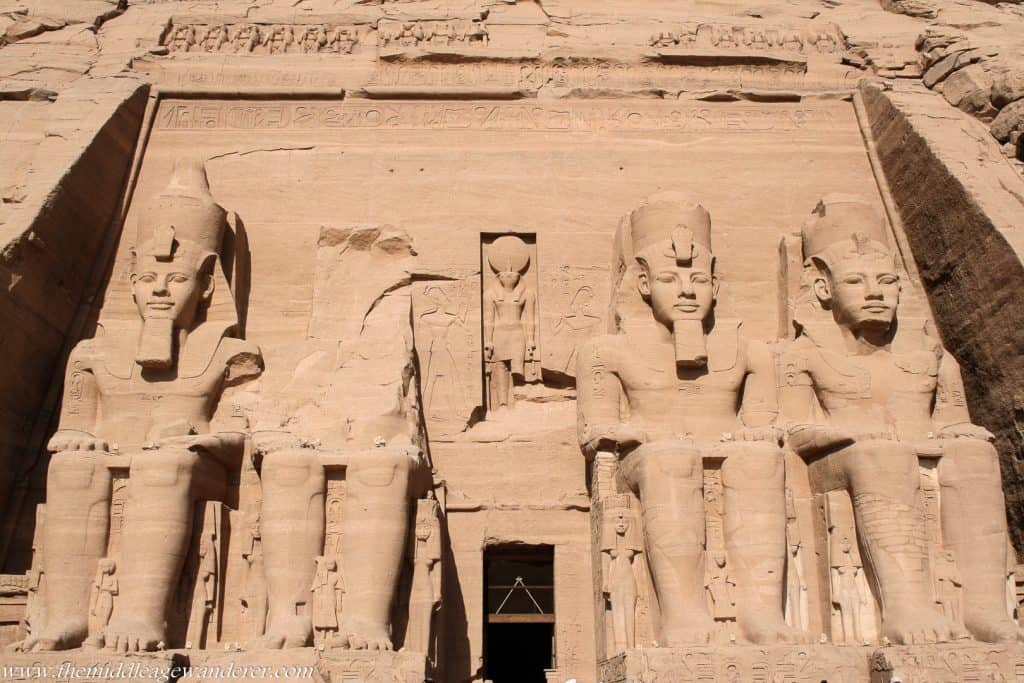
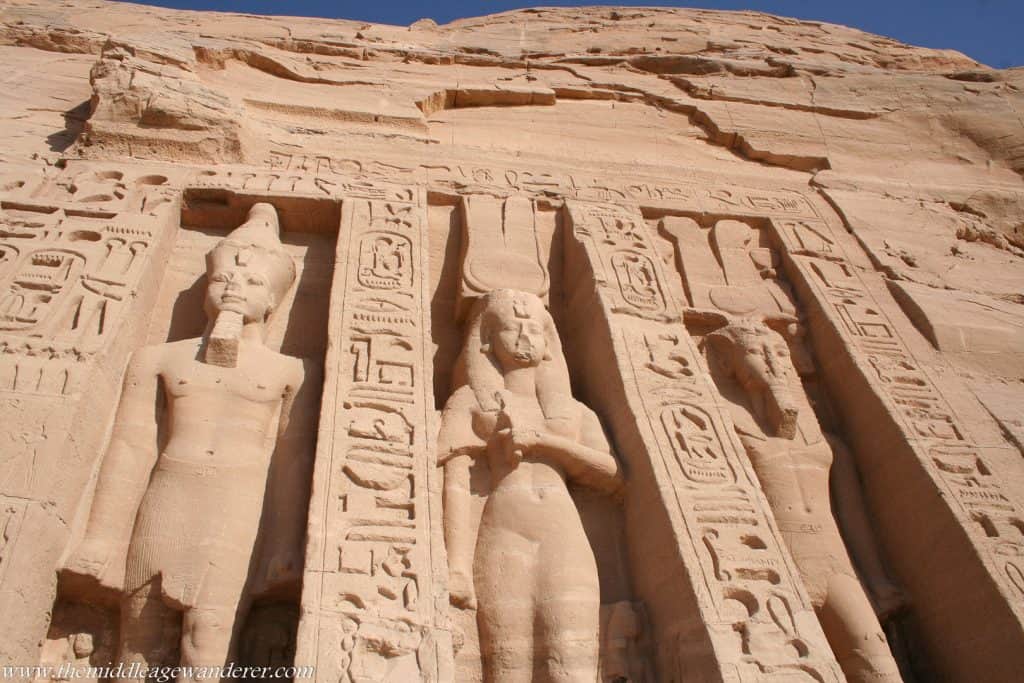
2 – Temple of Philai
You will find the Temple of Philai on Agilkia Island, downstream from the Aswan Dam. It was dismantled and moved when the Aswan Dam was constructed, as part of the Nubian Monuments UNESCO World Heritage Site (as was Abu Simbel).
The temple was completed in around 690AD and is made up of several shrines and sanctuaries and was build in honour of the goddess Isis. It is considered to be the last of the ‘classic’ Egyptian style ancient temples.
You can explore the temple complex when visiting during the day. In addition, visiting the temple at night allows to you experience the Philae Temple Sound and Light Show.
3 – Memphis / Saqqara
Saqqara is a huge cemetery of ancient Memphis and stretches over 7km of the Western Desert. The cemetery was used for over 3,500 years and was the final resting place for pharaohs to sacred animals.
The most famous structure at the site is Djoser’s Step Pyramid. It dates back to around 2,600 BC and is believed to be the first all stone structure ever built.
When visiting the complex you will also find over ten other pyramids and numerous tombs and burial temples. However, due to the poor construction techniques used, many of these are now either completely in ruins or in various states of disrepair.
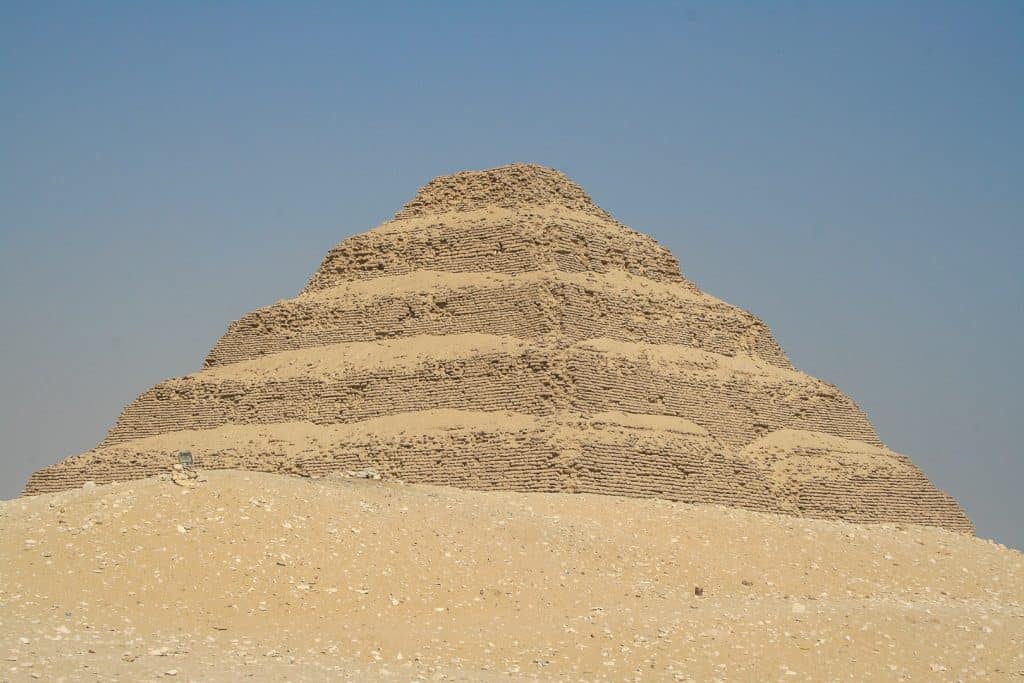
4 – Dendera Temple Complex
The Dendera Temple Complex is dedicated to the goddess Hathor. It is located about 2.5km outside of Dendera and about 60km north of Luxor . Hathor was one of the most popular goddesses with her protective role as a mother figure.
It is believed the temple was constructed between 54BC and 20BC, part of which was during the reign of Queens Cleopatra VII. The Temple of Hathor, within the temple complex, is one of the best preserved temples in Egypt, retaining many of its original features, including the original colours on its ceiling.
5 – The Temple of Horus, Edfu
The Temple of Horus, located in Edfu is a well preserved Ptolemaic temple, built between 237BC and 57BC and abandoned in 391AD when paganism was outlawed after the Roman Empire became Christian. Over time, the temple was covered in sand and it was not until the 1860s that it was excavated by Auguste Mariette. Being covered with sand has actually meant it was very well preserved.
As you walk up to the tower entrance you will be greeted by giant carvings of Horus guarding the entrance. As you enter through the tower entrance you then enter the courtyard you are greeted with large columns on the other three sides.
6 – Temple of Khnum, Esna
The Temple of Khnum in Esna is located on the west bank of the Nile, about 55km south of Luxor. It was built by Ptolemy VI between 180BC and 45BC. Khnum is the ram headed creator god and is said to have fashioned humankind on his potter’s wheel and the mud of the Nile.
The temple sits almost nine metres below ground level. While the main building has been excavated, much of the temple remains buried underneath the modern town. As you wander around the temple, you cannot help but wonder what remains buried under the town.
The temple is made up of six rows of four columns each. Each is adorned by lotus leaf capitals but when you look closer you will see that each one is different. As you can see in the photo, the grandeur of the temple is impressive. For instance, here you realise the size of the pillars compared to the man standing next to them.
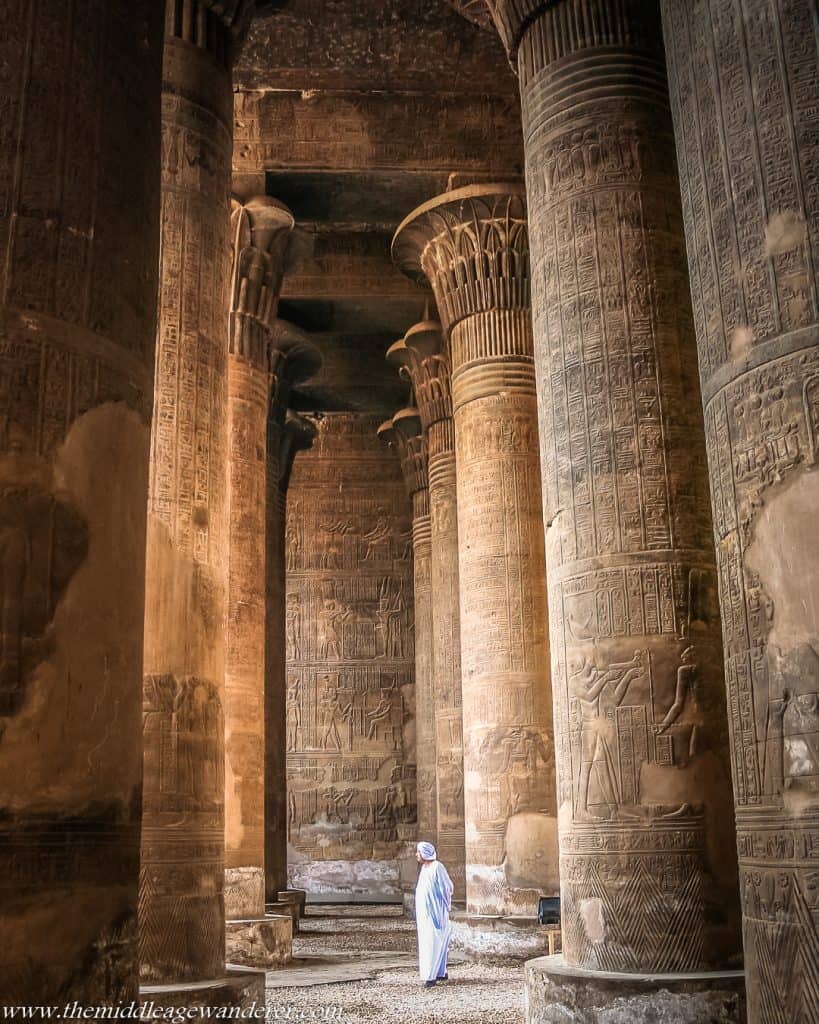
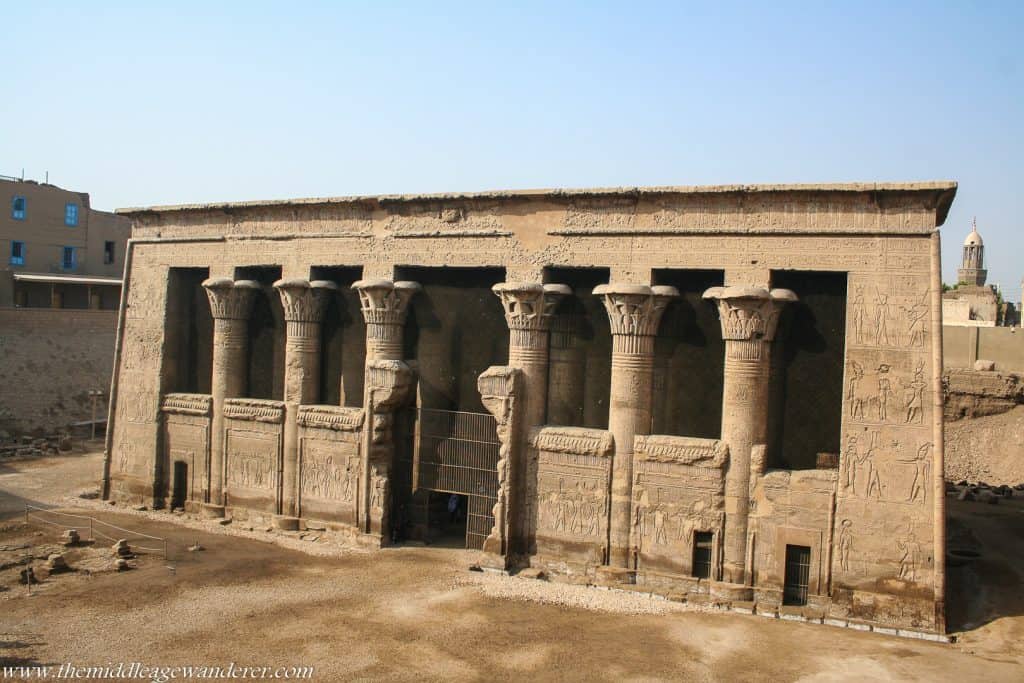
7 – Temple of Kom Ombo
The Temple of Kom Ombo is found in the city of Kom Ombo, about 48km north of Aswan. It sits on the east bank of the Nile and was dedicated to Sobek, the crocodile god and Horus, the falcon-headed god and was built between 108BC and 47BC.
The area of the Nile around the temple was once home to large numbers of crocodiles and it became Sobek’s main sanctuary. Captive crocodiles were kept in the temple and mummified crocodiles have been found in cemeteries around the area.
The original temple complex, with its dual dedication to Sobek and Horus was a perfectly symmetrical structure with two entrances. The eastern half was dedicated to Sobek and the western half was dedicated to Horus. However, the temple has definitely suffered over the centuries and has been damaged by earthquakes and erosion from the Nile. But what remains provides an amazing history of the temple
8 – Karnak Temple
The Karnak temple complex at Luxor is considered to be one of ancient Egypt’s largest and grandest building projects. In ancient times, Karnak was called The Temple of Amun at Thebes. It is now considered one of the two largest religious buildings in the world. The other complex is Angkor Wat in Cambodia. The complex was built over 2,000 years and covers more than 100 hectares.
Over time, the temple complex grew from the original temple to Amun. It became a site honouring other gods including Osiris, Ptah, Hathor, Isis and Horus. At the height of its use, it is believed that over 80,000 priests worshipped at the temple complex.
Due to its size, you need at least half a day to see a reasonable amount of the complex. If you don’t have much time, the main building at the entrance, the Great Temple of Amun is a must see.
If you are visiting Luxor, make sure you also visit The Colossi of Memnon.
9 – Hatshepsut Temple
Hatshepsut was one of Egypt’s first female pharaohs and ruled for about 20 years. Her reign is considered one of the most extraordinary in Egyptian history. It was one of the most peaceful and prosperous in Egyptian history. She built a strong economy with successful trade as well as many construction projects. Many of these projects can still be seen today including towering obelisks and roads in honour of Amun.
Hatshepsut’s mortuary temple is the most spectacular of her projects. The temple sits beneath the cliffs of Deir el Bahri on the west bank of the Nile. It was strategically placed next to the Temple of Mentuhotep II. Above all, by placing her temple here, she reinforced her position among the pharaohs.
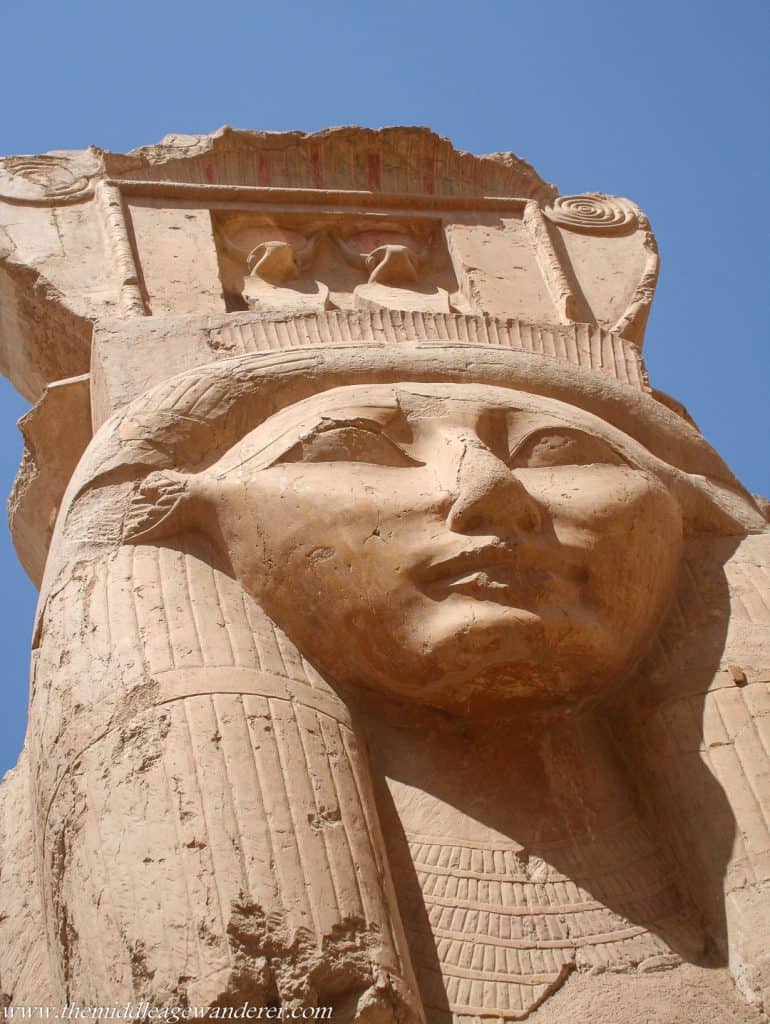
However, her successor, Thutmose III, her step-son, went about erasing Hatshepsut from history. It is not known why. For instance, he had her image removed from monuments and dumped the wreckage near her temple.
Her name was not rediscovered until the mid 19th century. The translation of the Rosetta Stone in 1824, allowed for the hieroglyphics on her temple and the wreckage of her other monuments to be deciphered. In addition when you visit the Temple of Hatshepsut, you are discovering a queen who is now considered one of the greatest monarchs of the ancient world.
10 – Pyramids & Sphinx
No list on must see sites in Egypt would be complete without the pyramids and the sphinx. The pyramids of Giza are one of the seven wonders of the Ancient World and the only one that still exists.
The pyramids and sphinx were built on a rocky plateau on the west bank of the Nile between 2550BC and 2490BC. It is now surrounded by the sprawl of modern day Cairo.
Firstly, you will find the Great Pyramid of Giza built as a tomb for Khufu and the other two large pyramids built by Khuru’s son, Khafre and grandson, Menkure. But the site also includes dozens of other pyramids and tombs.
Secondly, people visit the site for the sphinx. It was carved over 4,500 years ago and is believed to have the head of Pharaoh Khafre and the body of a lion.
Thirdly, you will also find the Solar Boat Museum near the Great Pyramid. Solar barges were buried with pharaohs as it was believed they needed transport in the afterlife. This cedar barge was found in 1954 and was restored from 1,200 pieces of wood.
PIN IT
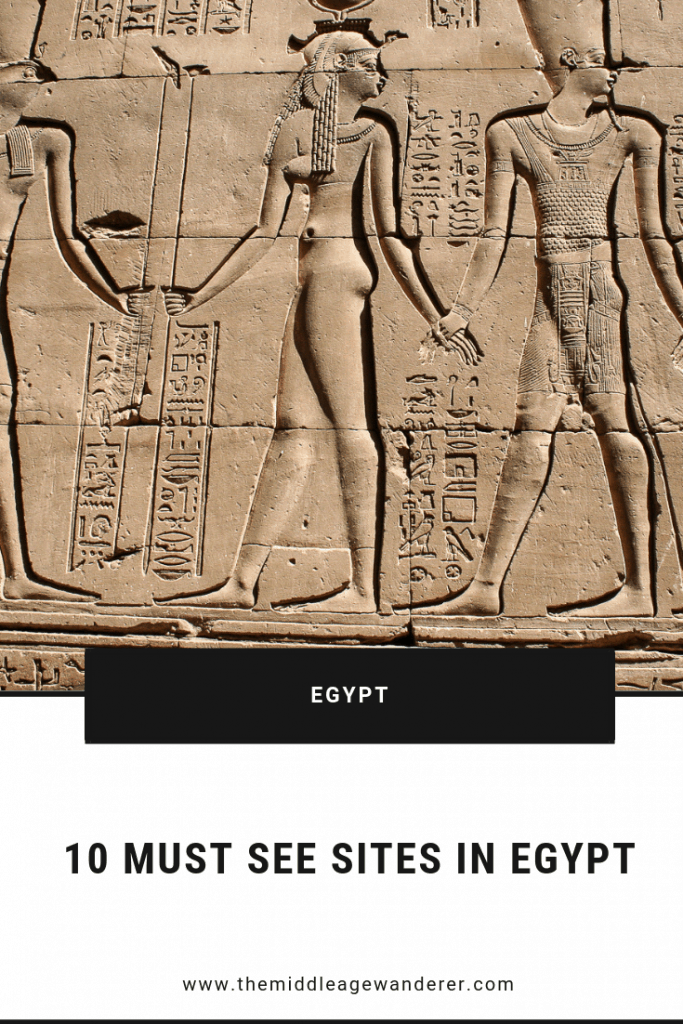
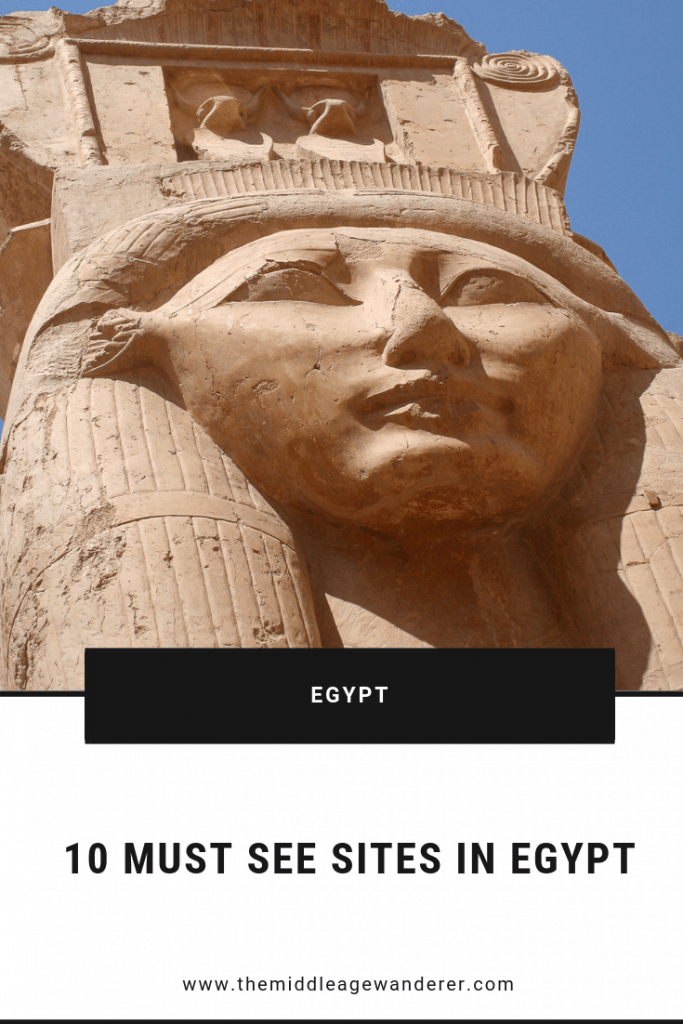


Egypt is such a cool place, and I have actually been there once, for a daytrip whilst I was in Israel many years ago. Theres sucha rich history there 🙂
It really is an amazing place to visit Ann. And there is so much to see. We loved being immersed in the history.
My husband went backpacking around Egypt years ago, and he still talks about it with such passion and would love for the both of us to return. His favorite place was a museum in Cairo – he just couldn’t believe that so many amazing antiquities could be housed under one roof … we’ll get there one day, I have no doubt.
Totally agree with your husband Jay about the museum in Cairo. There were so many small and intricate items that were just as amazing as Tutankhamen’s exhibit.
It’s really a great post for someone planning to go to Egypt. Full of great suggestions and practical tips. Your photos are stunning! Thanks for sharing.
Thanks Anna. There are so many amazing places to see in Egypt and these were some of my favourites.
It has always been amazing to me that all these monuments are still standing after all these millenia! I can’t say that Eygpt is on my list of musts, but if I did go I would probably want to stay away from the crowds and try to see other off the beaten path things. I am curious about the food, I do not think I’ve had Eyptian food and I would like to try it!
Totally agree Andi. Standing at the base of the Great Pyramid or at the Temple of Karnak was so surreal realising how long they had been standing.
This is such an inspiring post! Of course I want to visit the pyramids when I go to Egypt (hopefully in 2020!), but you’ve given many other great destinations to consider too! The Karnak temple complex looks really fascinating. each of these cites has so much history behind them!
It is an amazing experience to visit Egypt Leah. Hope you do make it!
This is a great list of places to visit in Egypt. It makes me want to return and visit them all.
Thanks Larch. We had three weeks there but there is still so much to see.
The Pyramids are on my bucket list. I just can hardly imagine how thrilling it would be to see them in person. All of the sites you show are spectacular!
It was a very surreal experience Sharon. I can remember standing at the base of the great pyramid and physically pinching myself to make sure it wasn’t a dream.
When I was young the first place I ever wanted to visit was Egypt. Now I’m 50 & have been to 70 countries & still never been! This has wet my appetite again though…one day I will see these beautiful places for myself…. And I love your use of maps – really helpful!
Thanks Sue. We loved Egypt. It was such a surreal experience to see all of these amazing places.
Egypt has been on my bucket list for years, I haven’t made it there yet. This list is exactly what I want to see there. Thanks for reminding me that I should bump it up on my travel-to list.
It is definitely worth visiting Slavka. So much history to explore.
Great list. I loved my time in Egypt and have visited all these sites except the Dendera Temple Complex – now I have an excuse to return.
Any excuse for a return trip Sarah! There are just so many amazing places to immerse yourself in history in Egypt.
Wow, these photos are great. I’ve not been to Egypt yet, but I really want to do so soon. And I cannot believe that they were able to move two temples to higher ground, but its so important that they were saved. Thanks for all of the great information!
Thanks Wendy. I’m in awe too and them being able to move these temples especially considering it was in the 1960’s.
What an inspiring in-depth and detailed post! Egypt has always been on my bucket-list and I’m going to bookmark this post for when we finally make it. I find it extremely helpful that you have maps next to each site- I find that helpful for when I am trip planning. Thank you!
So glad its helpful Catherine. Egypt is such an amazing country with so much history.